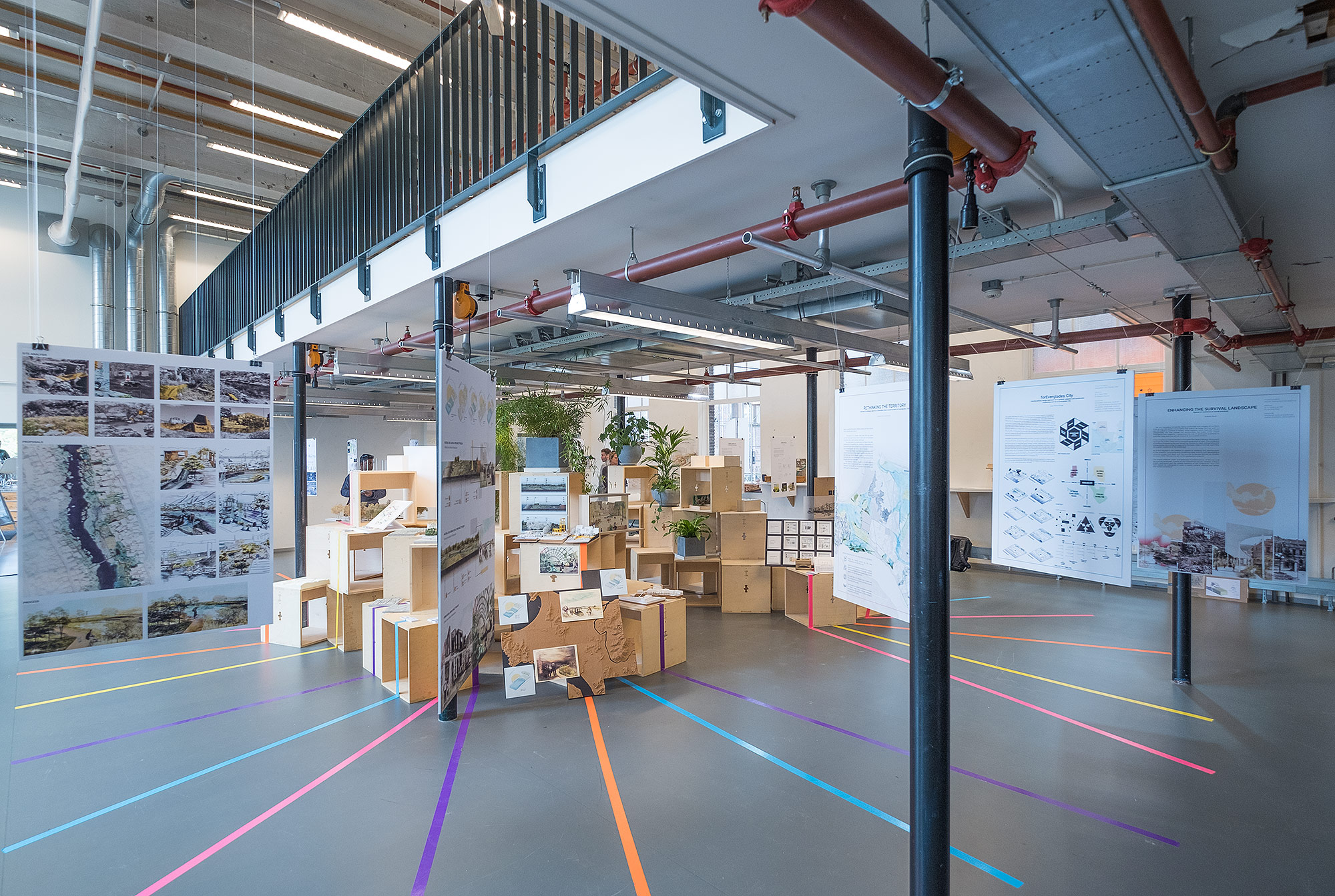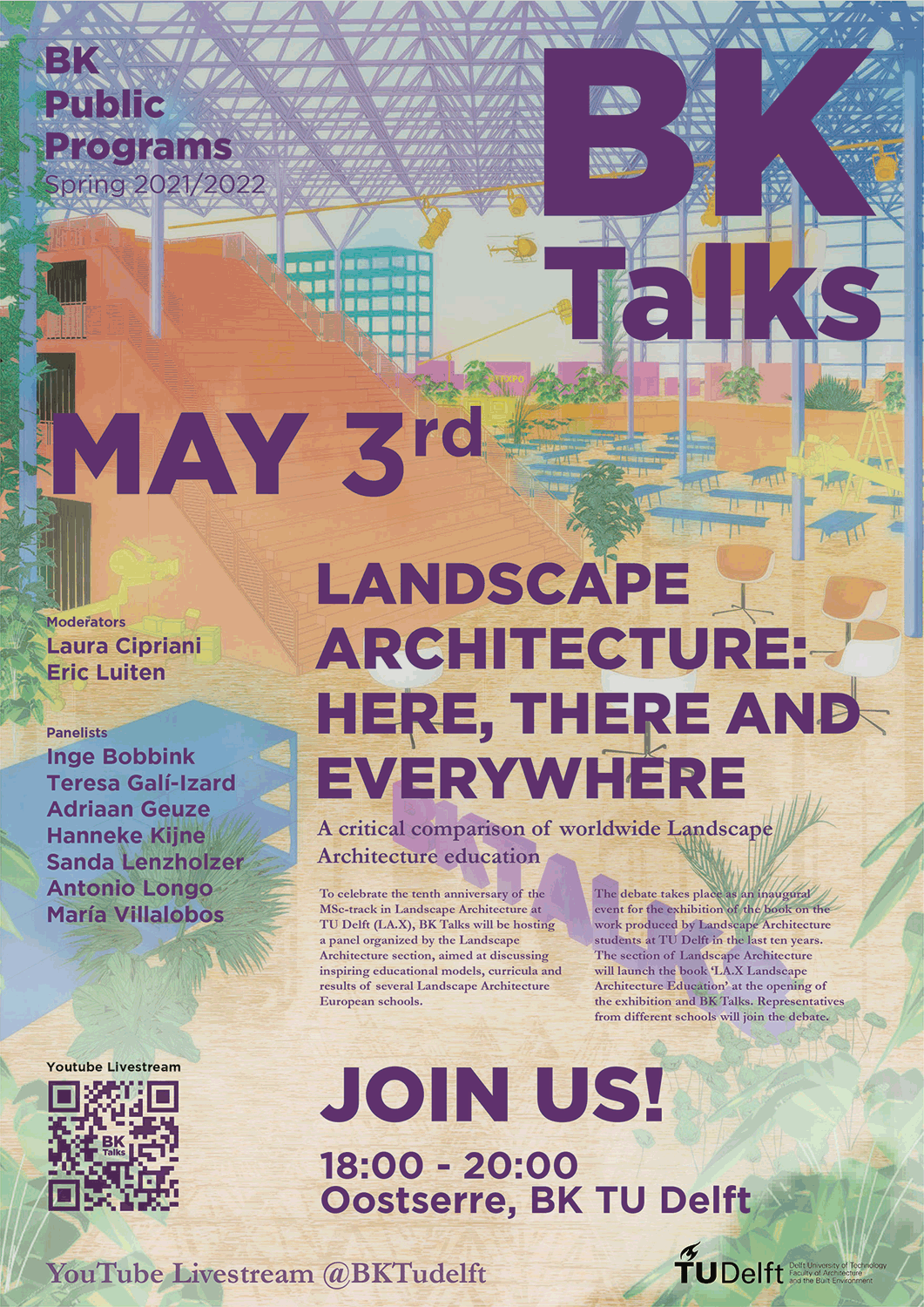The chair of Landscape Architecture is inviting you to a new series of events as part of our How-Do-You-Landscape lecture series – the HDYL Film Night.
Films are an exceptional communication middle to build narratives, document positions and transfer knowledge in an entertaining way. Dovetailing in with the lecture series, the screenings will address themes related to landscape and ways to understand it, order and act with it. The films will be based on contemporary themes such as walk-scapes, water-scapes, social-scapes, food-scapes and transport-scapes. Students of the master track Landscape Architecture are closely involved with the organization of the film in the role of curator and commentator in discussions around the topic. Students will introduce the theme and the film of the night with a short talk, followed by the screening and a closing discussion.
Our first Film Night on Thursday 18th February – 18.30, in room K, is on the theme of Disaster-scapes, the privileged ground for an array of questions in landscape architecture, urbanism and architecture. Increasingly part of our planetary condition, disasters are destructive events that radically disrupt environmental, spatial and social conditions. The role of spatial design disciplines in post-disaster environments is thus not only about reconstruction of territories, but is also critically encumbered with addressing trauma, loss and memory of past landscapes. Paradoxically too, post-catastrophe sites are also rich milieus for the examination of new ideas about nature, landscape and the human condition. Moreover, catastrophes often lead to paradigm changes in spatial development, policy and governance, and can catalyse dramatic technological and design innovations. And disaster landscapes are also forbidden places, generating stories of lost worlds and vague secrets.
Students Sarem Sunderland and Barbara Prezelj, will tease out some of these themes in the prelude to the film Stalker by Russian director Andrei Tarkovsky.
Sunderland contends that ‘Post-traumatic landscapes and memorial designs provide cases where the relation between landscape and memory is critical; in such cases, the transmission of memory through design becomes an assignment on itself – what is memory, how is it transmitted, and what role does space play in this transmission?
Prezeli will give an introduction to her work on Unfamiliar Territory: ‘In my research I primarily focus on territory and territory-production and its relation to landscape. The ‘unfamiliar’ as I approach it is first the unfamiliar as found and then the unfamiliar as novel, something that is not scripted or pre-determined. Basically what I argue is that if landscape architecture has any role in connection to disturbed sites these days then it is not about healing what society has damaged but rather redefine the problem and consequently the intervention. So keeping the unfamiliarity, embracing contingency, engaging us critically, moving from a product (final image) to production’.
Stalker – Andrei Tarkovsky, 1979 – Russia
Near a grey and unnamed city lies the Zone, an alien place guarded by barbed wire and soldiers. Ignoring his wife’s objections, a man rises in the early morning and leaves her with their disabled daughter to meet two men. He’s a Stalker, one of a handful who have the mental gifts (and who risk imprisonment) to lead people to the Room , a place in the Zone where one’s secret hopes come true. His clients are a burnt-out popular novelist, cynical, and questioning; and a quiet scientist more concerned about his knapsack than the journey. In the deserted Zone, the approach to the Room must be indirect. As they draw near, the rules seem to change and the stalker faces a crisis.’
Denise Piccinini and René van der Velde, with contributions from Sarem Sunderland, Barbara Prezelj .





